
generators: On a power trip
By Pam Meyer
Features Tech tipsIt is easy to feel left in the dark when it comes to recommending a generator to a customer. Will customers need it in a big house, small home or on a construction site? Does it matter?
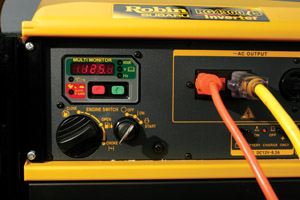 |
| An expansive control panel indicates a quality generator. The model shown above comes with a built-in hour meter and voltmeter. |
A road map for helping customers rent the right generator
It is easy to feel left in the dark when it comes to recommending a generator to a customer. Will customers need it in a big house, small home or on a construction site? Does it matter? What if it needs to power computers for a home business during a power outage; would that require anything special? Will the generator provide a good return on investment for the rental company? Surrounded by loads of choices, many rental operators feel powerless to make the right decision.
Suggesting a generator cannot be an across-the-map recommendation for every customer. Each individual’s specific needs dictate the load size and type of generator that would work best in a given situation. The challenge comes in helping a customer identify those needs and matching it to a generator with similar capabilities. Overcoming that challenge will place customers in a position of power at all times, whether they are on a weeklong camping trip, weathering a storm at home or working on a jobsite without electricity.
Take a break from work and come along on a little power trip. Each stop – from “Do the Math” to “Signs of Quality” will further empower rental operators to choose the right generators for their business and their customers.
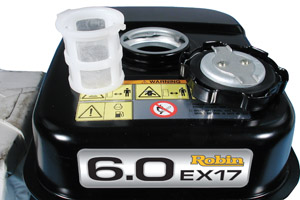 |
| Above: Check the construction and durability of the fuel tank before purchasing a generator. Below: A low-oil sensor will guard against the lubrication level dropping too low, which may result in engine damage. |
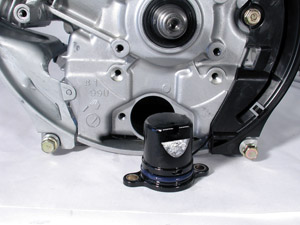 |
Do the math
When customers are looking for a generator, there are more numbers they need to crunch beforehand than simply checking their budget and some price tags. However, square footage is not one of those numbers. Homeowners might think that a 2,100-square-foot home would require a smaller generator than a 3,500-square-foot home. The occupants in the smaller house, however, might use a couple of sub-zero refrigerators and multiple appliances for a home business, while those in the larger house are only looking to keep a few standard appliances and lights running during a power outage.
Whether customers are homeowners or contractors ask them which appliances and tools they need or want to run off the generator. Begin by listing what the generator should power, such as lights, space heaters and a refrigerator or power tools and an air compressor.
Ask customers to find the silver tag attached to each appliance and tool to check the wattage, then write that number on the list and multiply it by the number of units to be used. As an example, three 100-watt light bulbs would need 300 watts of power to run.
Some appliances take more energy to start than they do to run. This surge of wattage also should be taken into account when determining total power needed. For example, coffeemakers, computers, televisions and welders run on a constant wattage, while washing machines, refrigerators, furnaces and air compressors need greater energy to start.

A contractor’s list might look like figure 1.
To allow for error or future power requirements, calculations for contractors should add 10 per cent to the total they have calculated. For example, the total in figure 1, would indicate that a generator that can handle 8,800 watts – or 8.8 kilowatts – would then be needed.
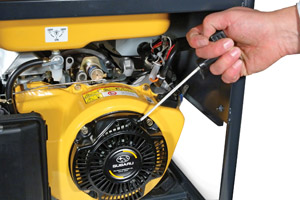 |
| Look for well-built starting components with either an easy-to-pull recoil starter or an electric start. |
 |
| Portable inverter generators offer easy-to-carry convenience coupled with quiet, clean power.
|
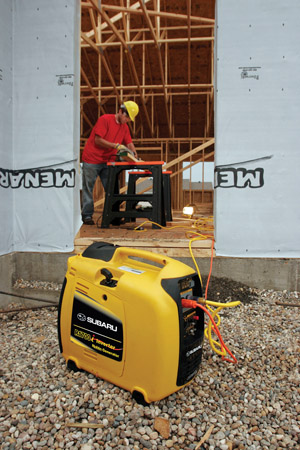 |
| When recommending a generator, ask customers which tools they need to run and then total the running wattages and surge wattages to determine the size of generator needed. |
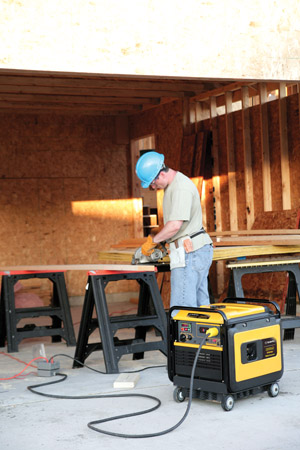 |
| Generators with portability options, such as a wheel kit, make it easier to move power around a jobsite. |
Some tools may have power listed in amps and volts, rather than watts, and horsepower (HP) might be used for motor-driven equipment. Some relatively simple calculations will convert these numbers into watts. If volts and amps are listed on the appliance, multiply the two to determine the wattage: amps x volts = watts. When horsepower is listed, keep in mind that 1 HP equals 746 watts. As a result, a 1/8-horsepower motor will draw 93 watts, 1/4 horsepower equals 186 watts, 1/3 horsepower equals 249 watts, 1/2 horsepower equals 373 watts, 3/4 horsepower equals 560 watts, and so on. Keep in mind that motors may need up to four times as much power to start as they do to run. Speak with an equipment dealer in order to get the exact specifications for a particular motor.
Now, with an understanding of how to calculate your customers’ needs, it is time to travel to the next stop on this power trip.
Shhh! Do you hear it?
Technology advancements have made generators quieter and cleaner than ever, but there are still several degrees of “quiet” and “clean” and the quieter the model, the more it will likely cost.
Inverter generators offer extremely quiet, clean power especially suited for sensitive electronics such as computers and accessories used in a home office. The power runs through an inverter board, producing purely manufactured power. Inverter technology works well for customers in residential or noise-restricted areas where the resonance from a standard generator may be problematic.
If an inverter generator is not in the budget, quality components aimed at reducing noise can lower the decibel level of conventional generators. Look for large mufflers, air cleaners built to suppress noise, and automatic idle control, which will slow the engine when power is not being drawn.
When it comes to “clean” power, conventional generators use automated voltage, with a regulator controlling the voltage level, keeping the power more stable or “clean.” Sensitive electronics run best on clean power since voltage fluctuations can cause computers to reboot or affect components that will later need to be recalibrated. Capacitor-style generators work best for renters in the construction industry. The power level is sufficient for power tools and air compressors, but would not be recommended for powering electronics for any considerable length of time. Under-standing these differences and a customer’s needs will ensure they get the generator that works best for their individual situations.
The difference between generators’ “cleanness” can be found on sine-wave charts. A sine-wave is one standard cycle of electric current, or 60 hertz cycles per second. Sensitive electronics can handle a sine-wave distortion up to 10 per cent, making conventional generators a good fit. Capacitor-style generators can have sine-wave distortion up to 40 per cent, which is adequate for tools and other less-sensitive equipment. Inverter generators provide the lowest sine-wave distortion of all styles with less than 2.5 per cent, making them the cleanest of the three.
Signs of quality
The next power trip stop will make it apparent that a quality generator should work better, hold up longer despite abuse by renters, and bring greater return on investment than lesser models.
A number of components indicate a well-built machine. First, a quality generator needs a quality engine because it does not matter how well the rest of the generator has been constructed if the engine is not sound. Rental operators should look for a supplier with a strong reputation for engine or generator reliability and a solid warranty program. Furthermore, a fuel-efficient engine will cost less to run and prevent frequent refueling and downtime. A generator with automatic idle
control will conserve even more fuel since the engine will lower to an idle when power is not being drawn from the system.
A quality generator needs to be made with quality components. Check the thickness of the steel construction, as well as the durability of the fuel tank. Look for well-built starting components – either an easy-to-pull recoil starter or an electric start. All of these things will help the generator stand up to the abuse it will likely face within the rental market.
An expansive control panel also indicates a better quality machine. Look for an hour meter to help keep track of maintenance checks and services, which can be especially valuable in the rental industry. Looking for the largest fuel tank available will lessen the time customers spend refueling, while finding a generator with a fuel tank gauge will simplify checking the fullness of the tank. Additionally, a low-oil shutdown will guard against customers letting the lubrication level drop too low, which may result in engine damage.
Generators with portability options will show that you are keeping the customer in mind. Adding a wheel kit to a conventional generator, for instance, will be especially helpful for an elderly renter, while a lifting eye will allow contractors to
prevent late-night theft by suspending the generator from a crane at the end of the day.
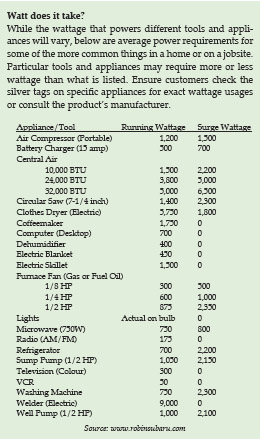 While it may not be the first thing to come to mind when looking for a generator, it is also important to check whether it is Canadian Standards Association (CSA) and Environmental Protection Agency (EPA) compliant. The Environmental Protection Agency has established three levels for emission control standards – Tier I, II and III – with deadlines for each tier of increased standards to be reached. Ground fault circuit interrupters (GFCI) will help protect operators from electrocution when used on a generator with a frame that can serve as a grounding electrode. The GFCI will compare the amount of current going to electrical equipment with the amount of current returning along the “grounded neutral.” If the difference between the two streams of current exceeds 5 milliamps, the GFCI will trip and stop the current. While the GFCI will not protect against short circuits and overloads, conventional generators will pop a circuit breaker when it becomes overloaded, killing the outflow on the receptacle. On an inverter generator, a digital display will show “overload” and the engine will stop. The generator would need to be shut down and reset once the load was lessened.
While it may not be the first thing to come to mind when looking for a generator, it is also important to check whether it is Canadian Standards Association (CSA) and Environmental Protection Agency (EPA) compliant. The Environmental Protection Agency has established three levels for emission control standards – Tier I, II and III – with deadlines for each tier of increased standards to be reached. Ground fault circuit interrupters (GFCI) will help protect operators from electrocution when used on a generator with a frame that can serve as a grounding electrode. The GFCI will compare the amount of current going to electrical equipment with the amount of current returning along the “grounded neutral.” If the difference between the two streams of current exceeds 5 milliamps, the GFCI will trip and stop the current. While the GFCI will not protect against short circuits and overloads, conventional generators will pop a circuit breaker when it becomes overloaded, killing the outflow on the receptacle. On an inverter generator, a digital display will show “overload” and the engine will stop. The generator would need to be shut down and reset once the load was lessened.
With that, the bulk of the power trip has come to an end. The lessons learned at each stop should offer a guide through the steps to finding a generator that is a perfect fit for any customer.
With this map in hand, rental comp-anies can proceed to the final destination and contact an appropriate manufacturer. Complete the trip empowered with the knowledge of how to find a generator that will fit any customer’s needs while withstanding rental industry abuse to provide the best return on investment.
Print this page
Leave a Reply